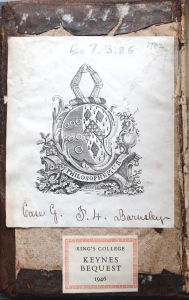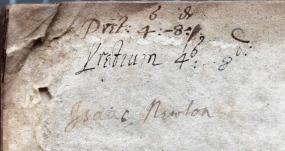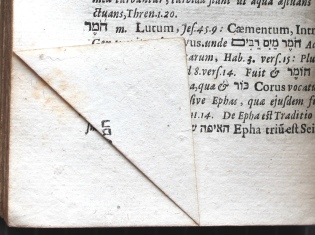Amongst our fascinating collection of books from the personal library of E.M. Forster (1879-1970) are some which were passed down to him by relations. These include a number of volumes which once belonged to his aunt, Laura Mary Forster (1839-1924):

The bookplate of Laura Mary Forster (1839-1924)
In his biography of Marianne Thornton, Laura’s aunt, E.M. Forster provides a brief outline of Laura’s character:
“Miss Forster never married … she followed the Thornton pattern of intellectual and philanthropic activity, but she could be censorious of her elders, and is constantly taking them up and dusting them before she replaces them, with a word of c0mmendation, on their shelf. In her later life she changed – became gentler, wiser, greater.”
Some of the volumes formerly owned by Laura are especially interesting, since they feature bindings with blind-tooled and stamped leatherwork of her own design. These include a volume by John Ruskin on the medieval Italian artist Giotto, which has a design based around circles, making reference to Giotto’s reputed ability to draw a perfect circle freehand without the aid of a compass.

Front cover of: John Ruskin “Giotto and his works in Padua …” (London: Arundel Society, 1854. Forster.RUS.Gio.1854)
It is possible that Laura’s designs were influenced by her association with the arts and crafts designer William Morris (1834-1896), with whom she is known to have corresponded and sent samples of her work. The Arts and Crafts Exhibitions Society exhibit for 1889 featured several of Laura’s book-bindings and also embossed leather chair seats produced by Morris and Co. from her designs.
Another work, a three volume set of “The life and letters of Charles Darwin”, which was given to Laura by the editor, Darwin’s son Francis, features a floral design based on poppies.

Front cover of volume two of: Francis Darwin (ed.) “The life and letters of Charles Darwin…” (London: John Murray, 1887. Forster.DARW.Lif/2.1887)
This set is one of the jewels of the Forster collection, since attached inside the front cover of the first volume is an autograph letter from Charles Darwin himself, addressed to Laura and thanking her for allowing him to stay at her house in Surrey in 1879. A transcript of the letter appears in a footnote on page 224 of the third volume.

First page of a letter to Laura Mary Forster from Charles Darwin, written in 1879

Second page of Darwin’s letter to Laura

Transcript of Darwin’s letter, from volume three of “The life and letters of Charles Darwin”
Laura was a lifelong friend of Darwin’s eldest daughter Henrietta, with whom she conducted a lively correspondence. Many of these letters survive, including some which convey Laura’s leaning towards Darwinism. Whilst stating that: “it is against one’s taste to come from furry animals, tidal or otherwise”, and remaining steadfast in her Christian faith, she nevertheless believed that: “it is of practical use to get a just estimate of one’s place in creation”. Other relations regarded Darwinism with horror, and Laura relates wryly that one family acquaintance: “…expects every time he comes down to see me hung up on one of the large oaks opposite our house…”
Bibliography:
Forster, E.M. Marianne Thornton (André Deutsch, 2000)
Kelvin, N. (ed.) The collected letters of William Morris, Volume II, Part B: 1885-1888 (Princeton University Press, 1987)
AC








